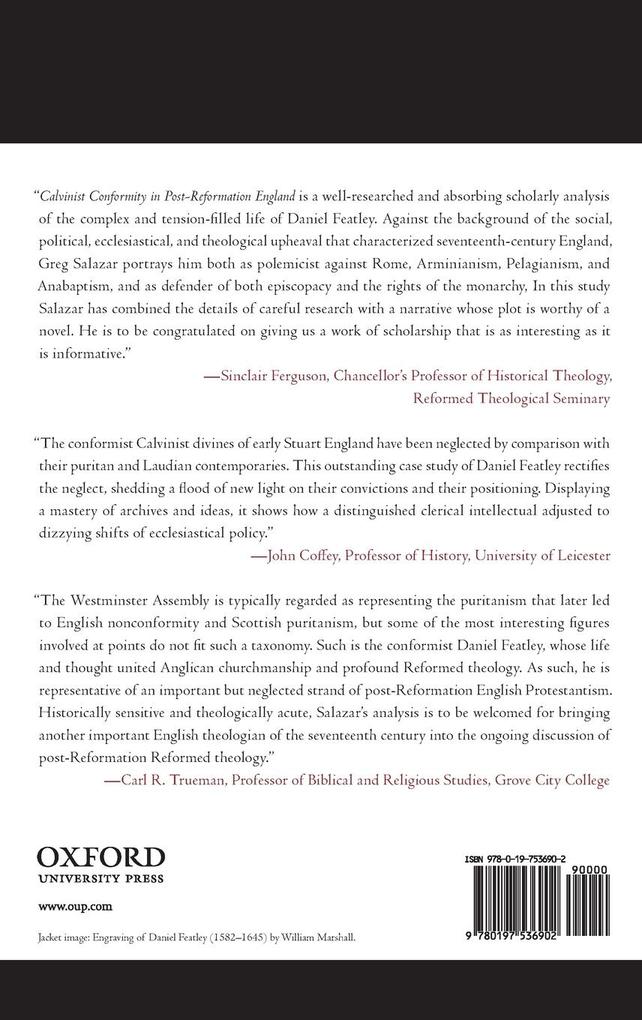
Zustellung: Mi, 02.07. - Mo, 07.07.
Versand in 2 Wochen
VersandkostenfreiBestellen & in Filiale abholen:
Calvinist Conformity in Post-Reformation England is the first modern full-scale examination of the theology and life of the distinguished English Calvinist clergyman Daniel Featley (1582-1645). It offers a comprehensive treatment of his two dozen published works and manuscripts and situates these works within their original historical context. The work uses Featley's career to trace the fortunes of Calvinist conformists--those English Calvinists who were committed to the established Church and represented the Church's majority position between 1560 and the mid-1620s--and offers a more nuanced perspective on the priorities and political maneuvers of these figures and the politics of religion in post-Reformation England.
Inhaltsverzeichnis
- Acknowledgements
- List of Abbreviations
- Note on Transcriptions and Translations
- Introduction
- Chapter 1 - The Formation of a Calvinist Conformist
- Chapter 2 - Regulating the Reformed Consensus: Chaplaincy, Licensing, and Censorship
- Chapter 3 - Anti-Catholicism: Scripture, Patristic Tradition, and Pastoral Polemicism
- Chapter 4 - English Reformed Soteriology: Countering Pelagianism, Arminianism, and Popery
- Chapter 5 - Pastoral and Practical Theology: Preaching, Piety, and Ecclesiastical Conformity
- Chapter 6 - Ecclesiology and Polity of an English Calvinist Conformist
- Chapter 7 - The 'Afterlife' of an English Calvinist Conformist
- Conclusion
- Appendix
- Bibliography
Produktdetails
Erscheinungsdatum
26. Mai 2022
Sprache
englisch
Seitenanzahl
306
Autor/Autorin
Greg A Salazar
Verlag/Hersteller
Produktart
gebunden
Gewicht
567 g
Größe (L/B/H)
226/157/30 mm
ISBN
9780197536902
Entdecken Sie mehr
Bewertungen
0 Bewertungen
Es wurden noch keine Bewertungen abgegeben. Schreiben Sie die erste Bewertung zu "Calvinist Conformity in Post-Reformation England" und helfen Sie damit anderen bei der Kaufentscheidung.









